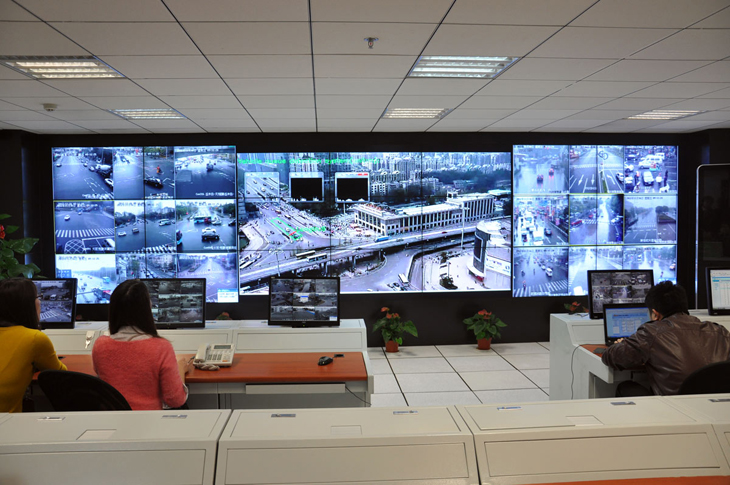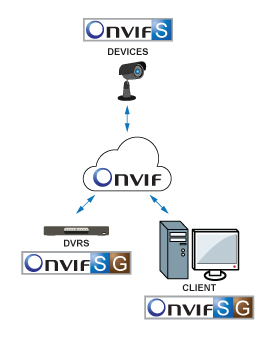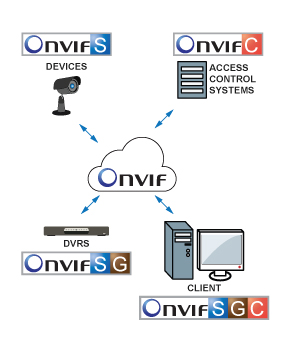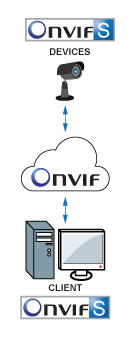
IP Camera Standard/Protocol - ONVIF
Analog CCTV cameras have no problem for compatibility. Basically, conventional CCTV cameras and DVRs can work together across different manufacturers. In early IP surveillance development, the IP surveillance system was heavily hampered by the lack of compatibility of equipment and low degree of flexibility in terms of future expansion. Companies engage in IP camera development and manufacturing have their own standard/protocol. Consequently, user only can choose all the equipment (including front-end cameras, back-end storage device) from the same company. After several years chaotic development, in which the manufacturers were introducing their ow standards for transmitting and recording video in IP video surveillance systems.
ONVIF - IP-based Security Standard
In 2008, Sony, Bosch, Axis companies established an organization called Open Network Video Interface Forum (ONVIF). ONVIF aims to solve the IP surveillance systems interoperability between products regardless of manufacturers. It is committed to make a common standard to accelerate the adoption of IP surveillance system. ONVIF has standardized the digital interface of IP surveillance products and unifying compression and transmission of video and audio stream, IP device discovery, Pan/Tilt/Zoom (PTZ) control, Alarm inputs and outputs, configuration and control procedures, motion detection etc. After seven years development, ONVIF has many standard versions including ONVIF 1.0, ONVIF 2.0, ONVIF 2.2, ONVIF 2.4, ONVIF 2.5
The core concepts of ONVIF are:
- Standardization of communication between network video devices
- Interoperability between network video products regardless of manufacturer
- Open to all companies and organizations
What about ONVIF Profiles?
At the beginning, the ONVIF standard encountered problems with the lack of compatibility between some versions. Therefore, in 2012 the organization introduced the concept of "profiles" which is continuously developed. The "profiles" allows for easy and effective check of the conformity of IP surveillance products without analyzing technical details. Undoubtedly, when devices and software are based on the same profile, they are compliant without a doubt. Currently, ONVIF has three profiles, each of profiles has different features.

Profile Q (ONVIF Q): Addresses device discovery and configuration, as well as the management of TLS certificates and keys
Profile G (ONVIF G): Address configuration of recording and searching, playing back the video on the IP-based security device. It supports operations on video, audio and metadata.

Profile C (ONVIF C): Supports integration with physical access control system, addressing interoperability between these systems and network video systems. Profile C conformant devices within the access control system provide door and access point information and functionality related to basic door control activities such as locking and unlocking doors, when a door has been accessed and other door monitoring tasks.

Profile S (ONVIF S): Focuses on common functionalities of IP video systems, i.e. specification of audio and video streaming between the device (e.g. camera) and client (software app, NVR). The client can configure the audio, video, and data streams, select PTZ protocols, make use of metadata, alarm inputs and relay outputs.

In conclusion, ONVIF Profile allows user to more easily identify features supported by a profile without knowing the compatibility between ONVIF versions. In addition to Profile C for physical access control system, ONVIF offers Profile S as the interface to stream video and audio between conformant devices and clients, and as well as Profile G, focuses on video storage, searching, retrieval and playback.
ONVIF vs PSIA
In addition to the ONVIF, there are other organizations intend to establish the standards for network security products. The most active one is PSIA. Physical Security Interoperability Alliance (PSIA) has a mission to bring true plug-and-play interoperability across the different security products and services - cameras, security sensors, access control, video analytics, physical security information management. The problem of PSIA is a low popularity - it currently brings together fewer than 50 companies (including Cisco, GE, Hikvision, IBM, NICE, Pelco, Milestone, Genetec). Meanwhile ONVIF Alliance has over 500 members that offer more than 5000 products compliant with the ONVIF standard.
Why ONVIF does not work?
The most majority IP-based security products claim to compliant with ONVIF standard. However, when end-users try to install these devices marked with this standard might encounter some problems, such as network video recorder can't discover the IP cameras in the same LAN network, motion detection doesn't work. Why is this happening?
First, you need to verify that your installed devices are truly compliant with ONVIF standard. Some manufacturers often mark their products as compatible with ONVIF, although this is not true. It's better to buy/use the IP-based security products from members of ONVIF. You can find the full list of members/manufacturers who are verified to offer ONVIF compliant products.
Second, it's not possible to be ONVIF compliant only; the IP-based security products need to be compliant to a Profile as well. You can be ONVIF conformant only, but if you are it is not guaranteed that you would get interoperability between other ONVIF devices and clients. To truly reap the benefits of ONVIF, you need to be Profile S compliant as it dramatically increases the chance of things like video and audio streaming or video configuration and multicast actually working well together.
One may encounter cases within a set of devices with Profile S, having no problems with connectivity and video streaming, but with some functions (e.g. motion detection). It is usually caused by errors of the standard or, more often, by an incorrect implementation of the standard/profile made by the manufacturer. Such problems should be immediately reported to the manufacturer that, in turn, should release improved software. ONVIF forum is heavily working on new, improved versions of the standard, which will be debugged and more precise in terms of terminology.
Get My Latest Posts
Subscribe to get the latest updates.
Your email address will never be shared with any 3rd parties.
Tags: IP Camera, IP Camera Installation